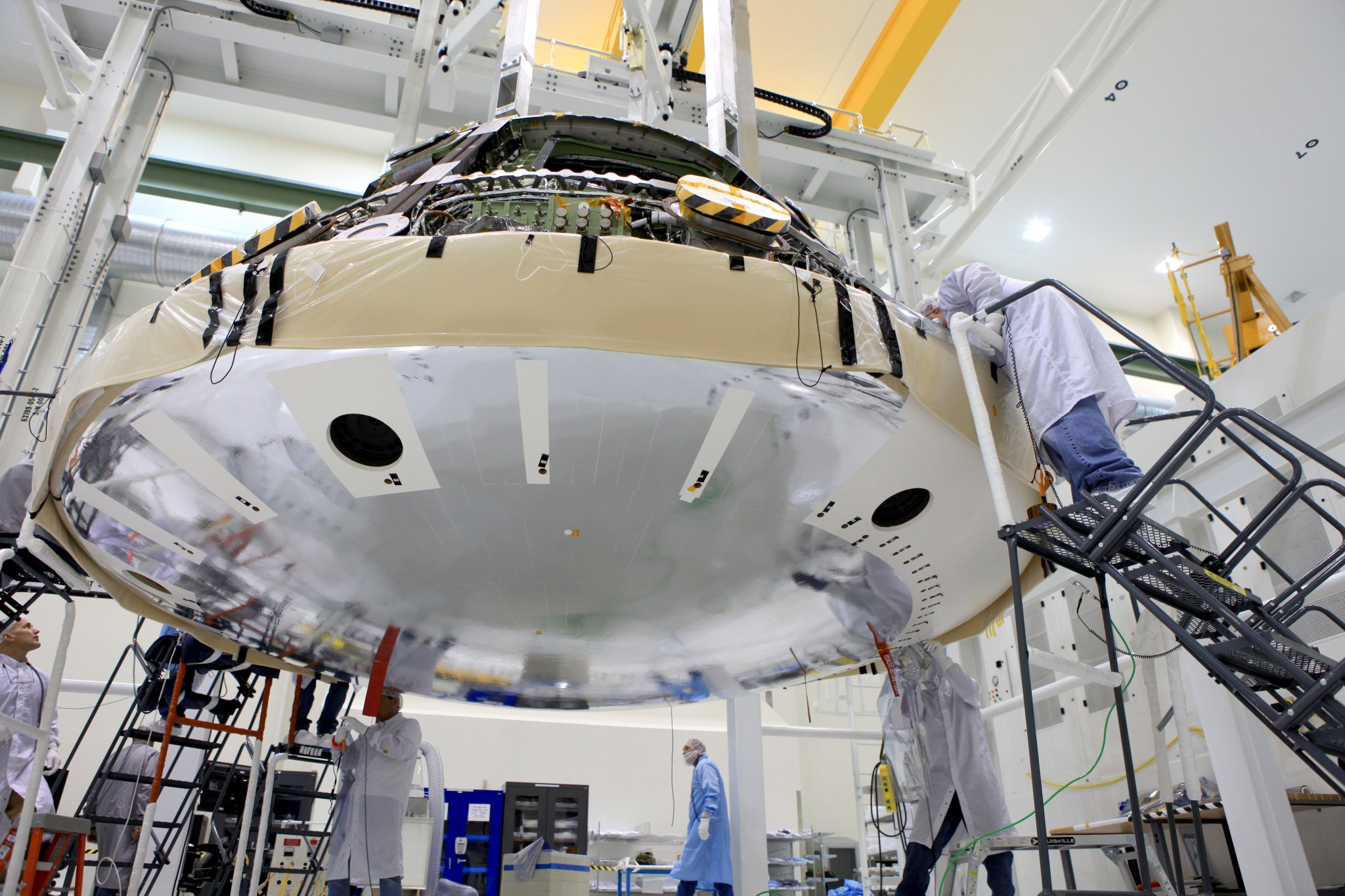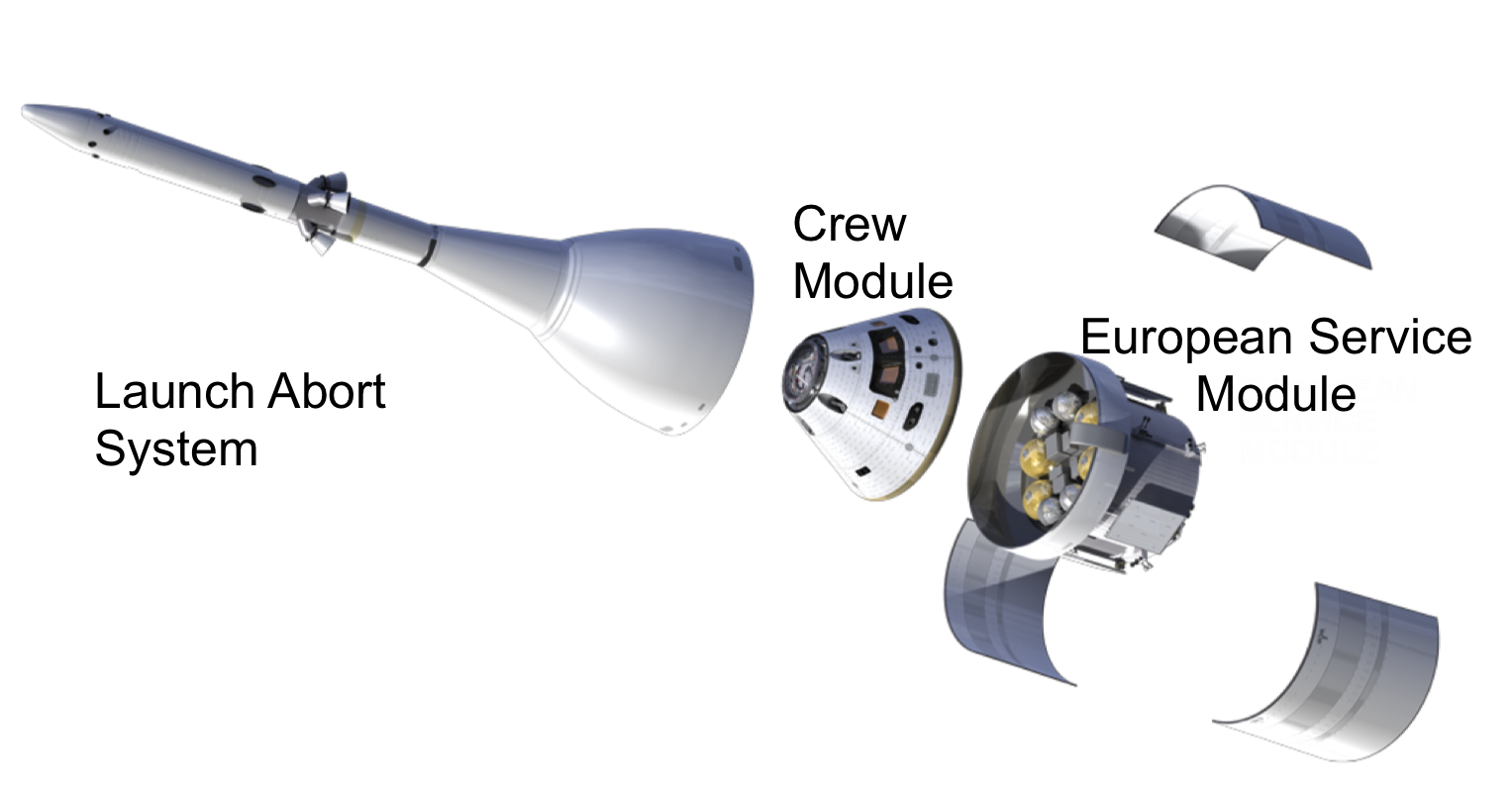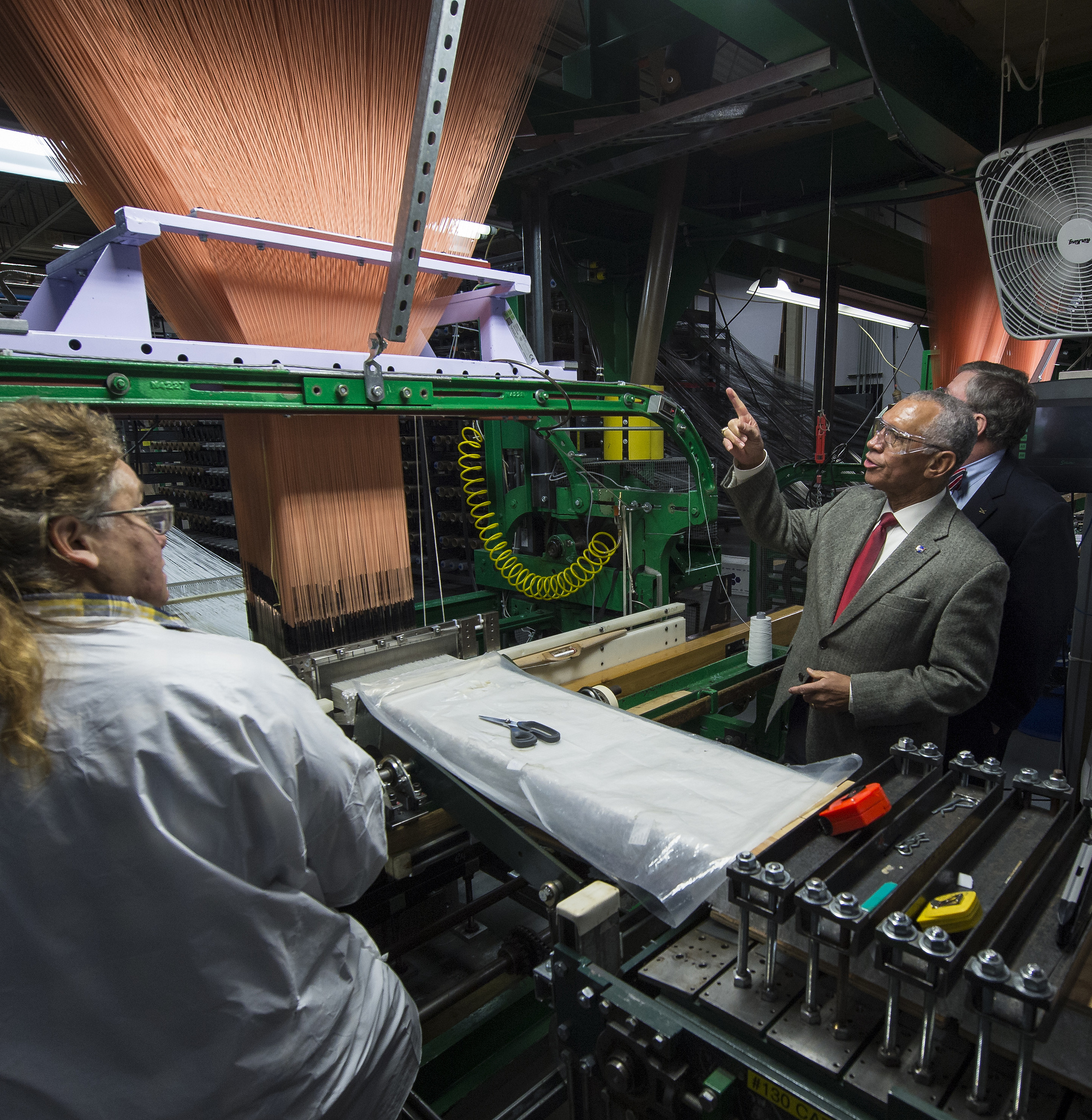Just as old clunky ink jet printers from the 1990s evolved into today’s state-of-the-art 3-D printers, thermal protection materials used on NASA spacecraft are getting a facelift–a major three-dimensional one.
Engineers used the original material, called two-dimensional carbon phenolic, in the past on the space shuttle to protect it from the rocket flames during launch, on planetary exploration probes and on the 10-inch disc-shaped compression pads on NASA’s Orion spacecraft, which flew in space on its first flight test in December 2014.
But for Orion’s next flight and on the journey to Mars, engineers have developed a more efficient material to replace carbon phenolic called Three-Dimensional Multi-Functional Ablative Thermal Protection (3D-MAT). The material was developed by
NASA’s Ames Research Center in Moffett Field, California, in collaboration with Bally Ribbon Mills in Bally, Pennsylvania, and San Diego Composites in San Diego, California, for NASA’s Space Technology Mission Directorate (STMD). STMD funded the incremental maturation of the novel technology from investigation of the basic concept through proof-of-concept performance testing in the severe thermal environment expected for Orion’s future missions.
The pads are wedged between the crew module and the service module of Orion to support the extreme forces the crew module experiences on launch and ascent into space. Each pad supports approximately 55,000 pounds. That’s the equivalent of withstanding the force of 16 elephants jumping on Orion at the same time.
The discs also guard nearby parts of the crew module from explosive shock when the service module separates from the crew module, and they provide additional heat protection as the module streaks through the atmosphere, where the surface of the spacecraft’s heat shield can reach temperatures greater than 4,000 F.
“Orion’s second flight will have the spacecraft enter Earth’s atmosphere at a much higher velocity than during its first flight, which means it will generate a lot more heat than pads made of carbon phenolic could withstand,” said Jay Feldman, the technical lead for 3D-MAT, who works for ERC, Inc., at Ames.
Because carbon phenolic wasn’t a solution for the second flight, engineers explored numerous other options including single-type or hybrid-type fibers, 2-D or 3-D techniques, weaving or layering and various gooey resins.
“3-D weaves offer superior strength to 2-D weaves,” Feldman explained. “The combination of quartz fibers–not carbon–and 3-D weaving gives 3D-MAT the robustness it needs to perform structurally. It is less massive and survives extremely high heating, keeping the structure and contents underneath, like astronauts, cool.”
The difference between a 2-D and 3-D object is that a 2-D one only has length and width. 3-D objects have height as well as length and width. Thus, materials are weaved with fibers not only length- and widthwise but also vertically (i.e., height) up and down through the length and width.
To make the material, 5,000 quartz fibers, each individually controlled, are woven together, making a 50-layer chunk stretching 13 inches long by 12 inches wide by 3 inches thick. The piece is injected with special glue to fill tiny pores between the fibers and layers, curing the material into its final masterpiece.
When the first samples of the material were completed, it was time to turn up the heat, and test them in Ames’ Arc Jet Facilities.
Arc jets simulate the extreme heat and pressure spacecraft experience when entering a planet’s atmosphere at extreme speeds. The arc jets fire electricity at air particles so fast the particles turn into supersonic plasma. This gives engineers controlled test data on the ground before flight.
In arc jet tests of 3D-MAT, the material withstood impressively high heat fluctuations, temperatures and pressures – consistently better than carbon phenolic, which cracked under the same conditions.
After three years of STMD funding, the team is ready to hand over their research and development efforts to the Orion program for its next mission’s development and flight hardware.
“When we first started woven thermal protection systems technology, we felt it had the potential to significantly impact future NASA missions by changing heat shield development from a challenge to overcome into a mission-enabling component,” said Ames’ Ethiraj Venkatapathy, chief technologist for the Entry Systems and Technologies Division. “In less than 36 months, we are celebrating this technological achievement and delivering a highly developed, multi-functional material with superior performance to meet Orion’s needs as well as to address the critical needs of NASA’s journey to Mars.”































